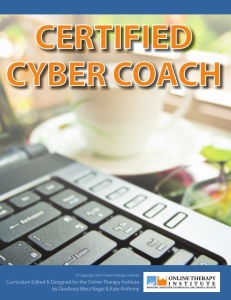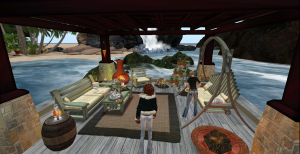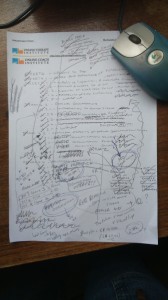Sometimes I feel I neglect the coaching part of me!
It’s true that the majority of my work tends towards the counselling and therapy side: but am also a Certified Professional Coach (CPC) and an IAC Masteries™ Practitioner; maintain strong links with the Coaching Division of the British Association for Counselling and Psychotherapy as their LinkedIn membership officer and Specialist Advisor for Online Coaching; and am also a member of the Association for Coaching (AC) with the UK Chair of the organisation, Gladeana, being on our Faculty. The Online Coach Institute is also an International Association of Coaching (IAC) Coaching Masteries™ Authorized Licensee (having adapted them to online work), and DeeAnna and I are both on the Faculty of the excellent Institute for Life Coach Training (ILCT).
I’ve had cause to remember all this during this week because I’ve been working on our new credential – the Certified Cyber Coach course (CCC). We have offered Online Coaching training as a Specialist Certificate for a while now, but it seemed to me while talking with my coaching colleagues that there is a need for a shorter course that simply introduces you to what is available within the realms of technology to enhance your work, alongside giving you the core information as to how to embrace electronic communication with clients and how to avoid the pitfalls that may lurk in doing so.
So I have built a hybrid course! Less intense than our Specialist Certificate of 30 hours, but bigger than our basic Introduction to Online Coaching course (which offers 5 hours of learning).
By modelling the course on our popular Certified Cyber Therapist course structure of 15 hours, I’ve been able to include much more than the essentials of online behaviour, ethical considerations, and practicalities of using email, chat, telephone/audio and video with clients. I’ve included the importance of having a Coaching Strategy for using technology in your work, information on Apps to both to manage practice and for your clients, and the exciting world of how Vision Boards look these days using technology! I’ve added in valuable learning in taking up online methods for creative writing and the potential of a virtual coaching practice in a 3D environment. To top all that off, it includes resources to help you plan and blend technological offerings into a rounded coaching practice ready for the client living and working in the digital age.
And, just for fun, the final lesson looks at the benefits that other coaches have found by taking their practice online, losing the daily commute and working more flexibly, and invite you to envision how your future practice will look when your clients are only a click away.
Don’t forget – each person taking the CCC will gain one-to-one mentoring from me to ensure your learning fits your individual needs as a coaching practitioner, whatever field of coaching you are in (including therapist as coach!).
Personally, I can’t wait to get started! Email me if you fancy a chat about it, or head over the Coaching Courses page to see more!
🙂



 beautiful island, we have been virtually homeless for around six months, both of us feeling out-of-sorts and ungrounded within an important part of our work – the virtual world. If you have ever been homeless, as I have, you will know exactly what I mean. And if you haven’t, I promise you it’s not exactly a bundle of fun emotionally (quite apart from practically, of course).
beautiful island, we have been virtually homeless for around six months, both of us feeling out-of-sorts and ungrounded within an important part of our work – the virtual world. If you have ever been homeless, as I have, you will know exactly what I mean. And if you haven’t, I promise you it’s not exactly a bundle of fun emotionally (quite apart from practically, of course).